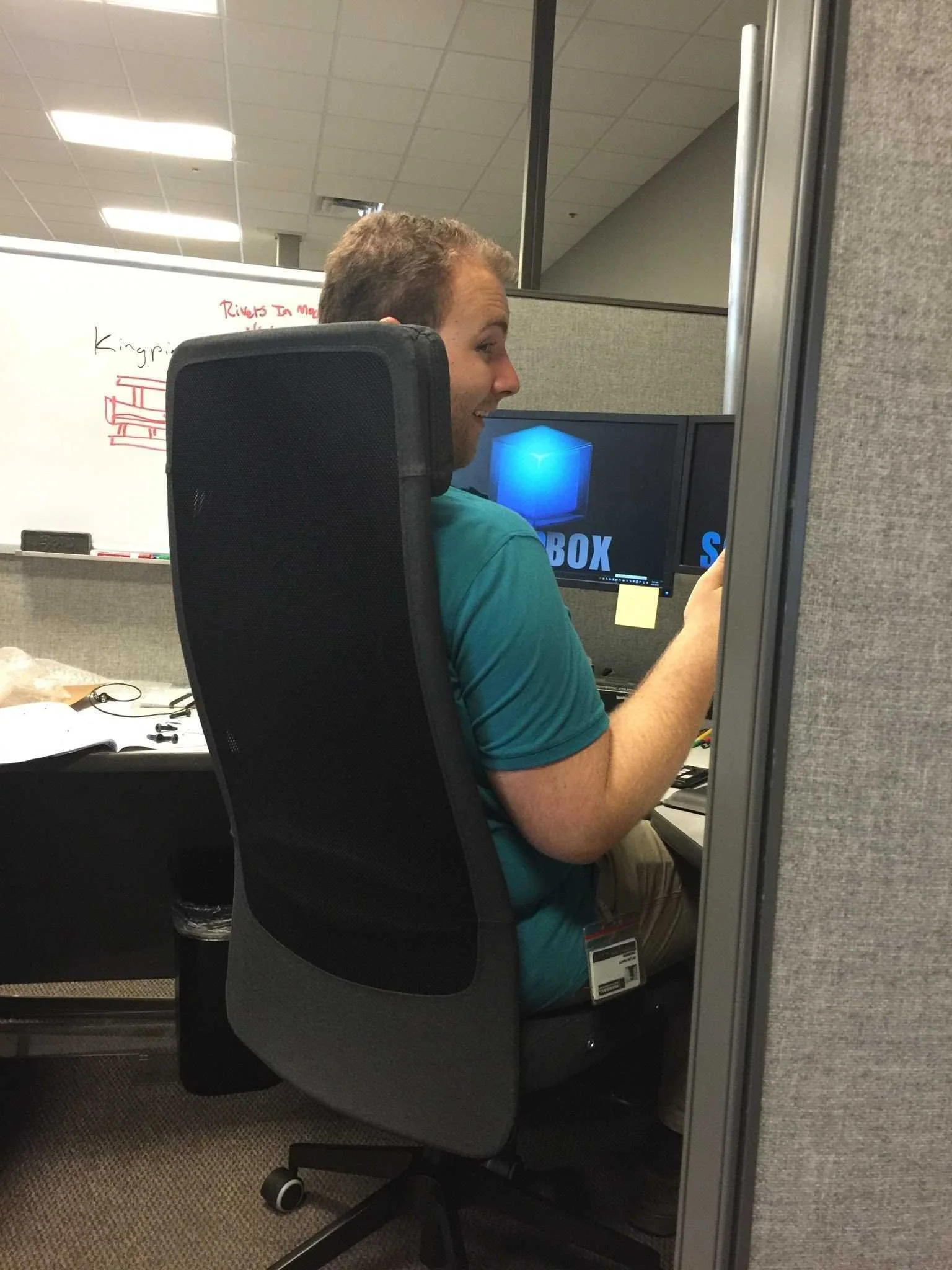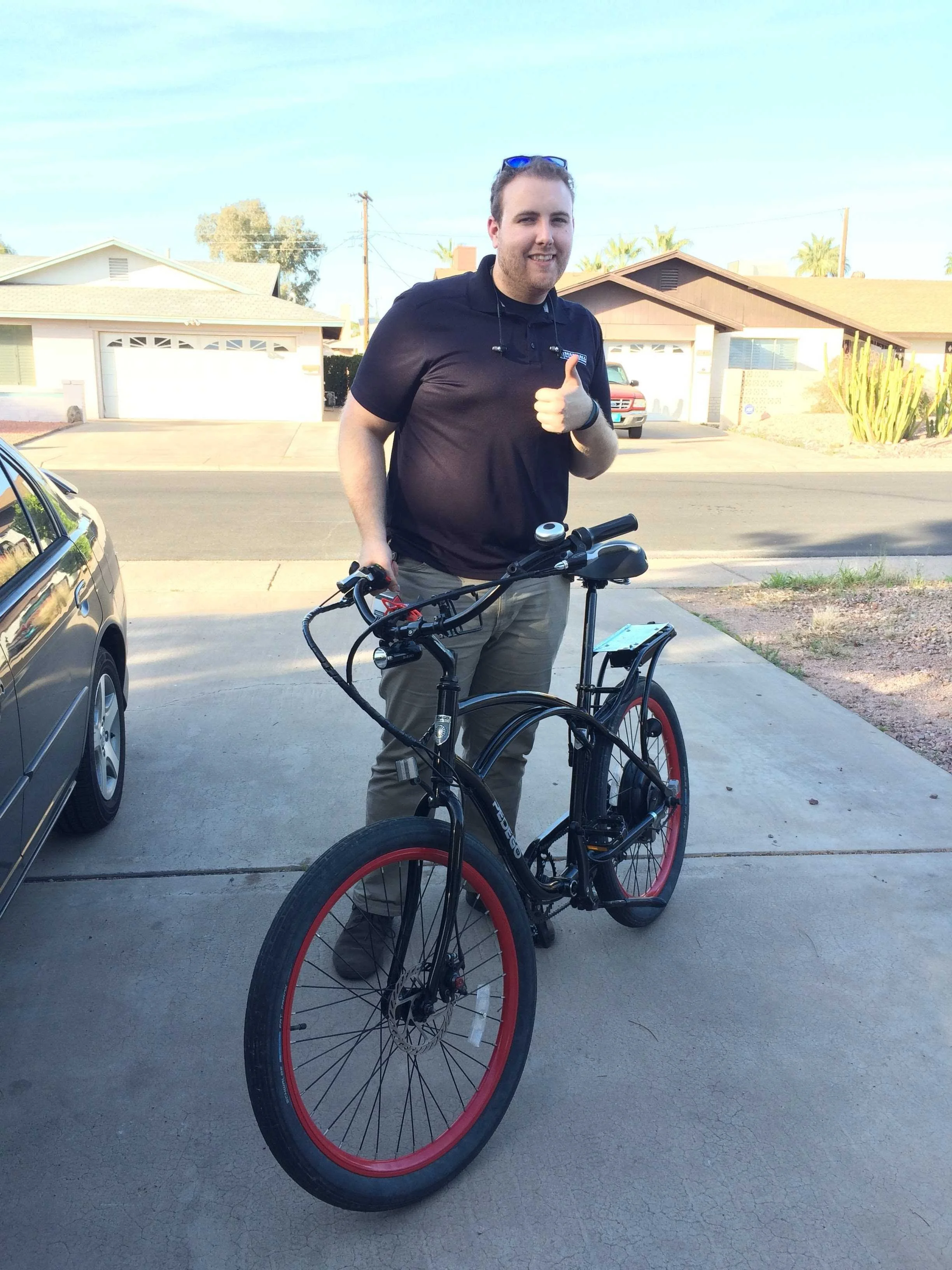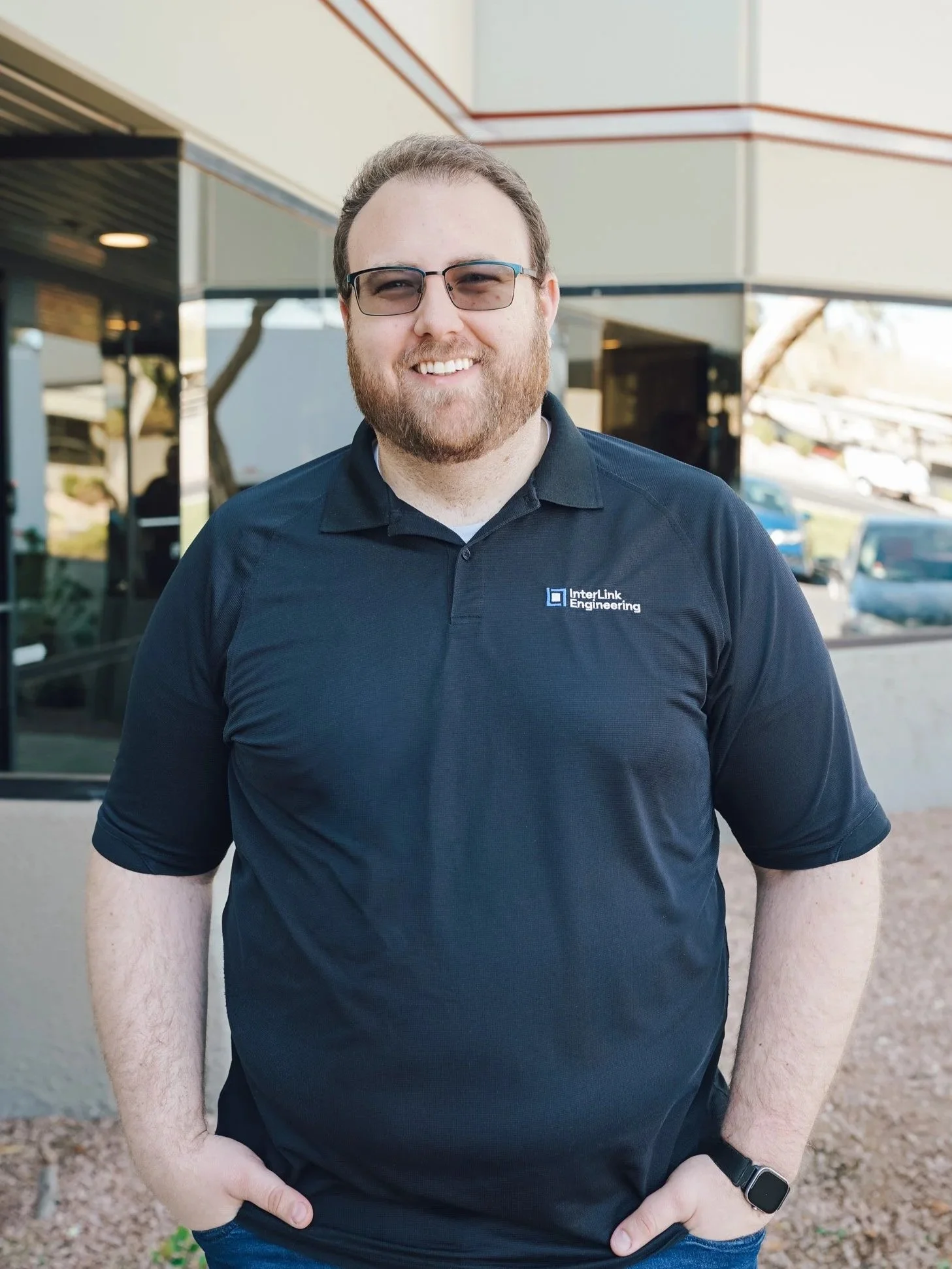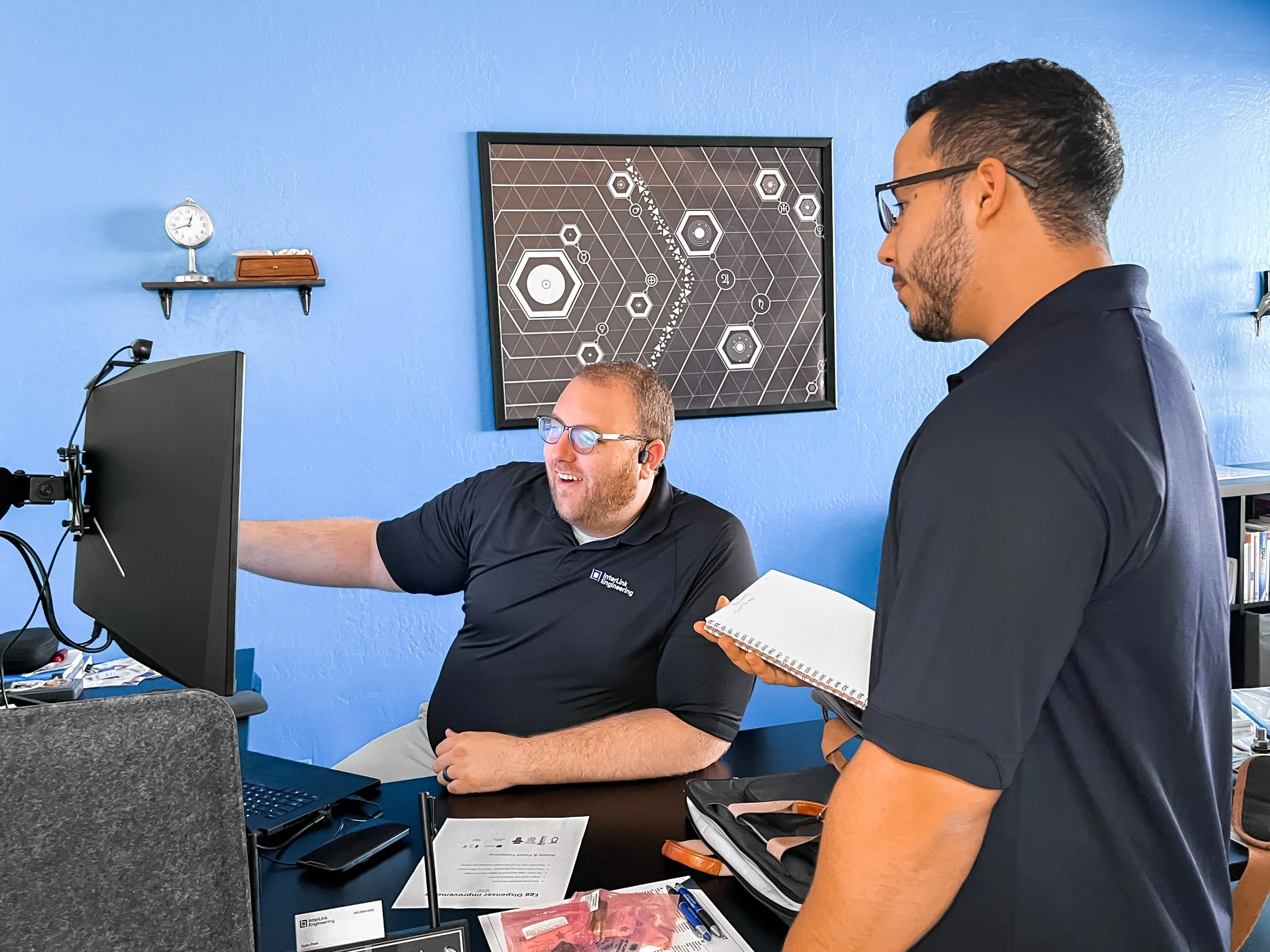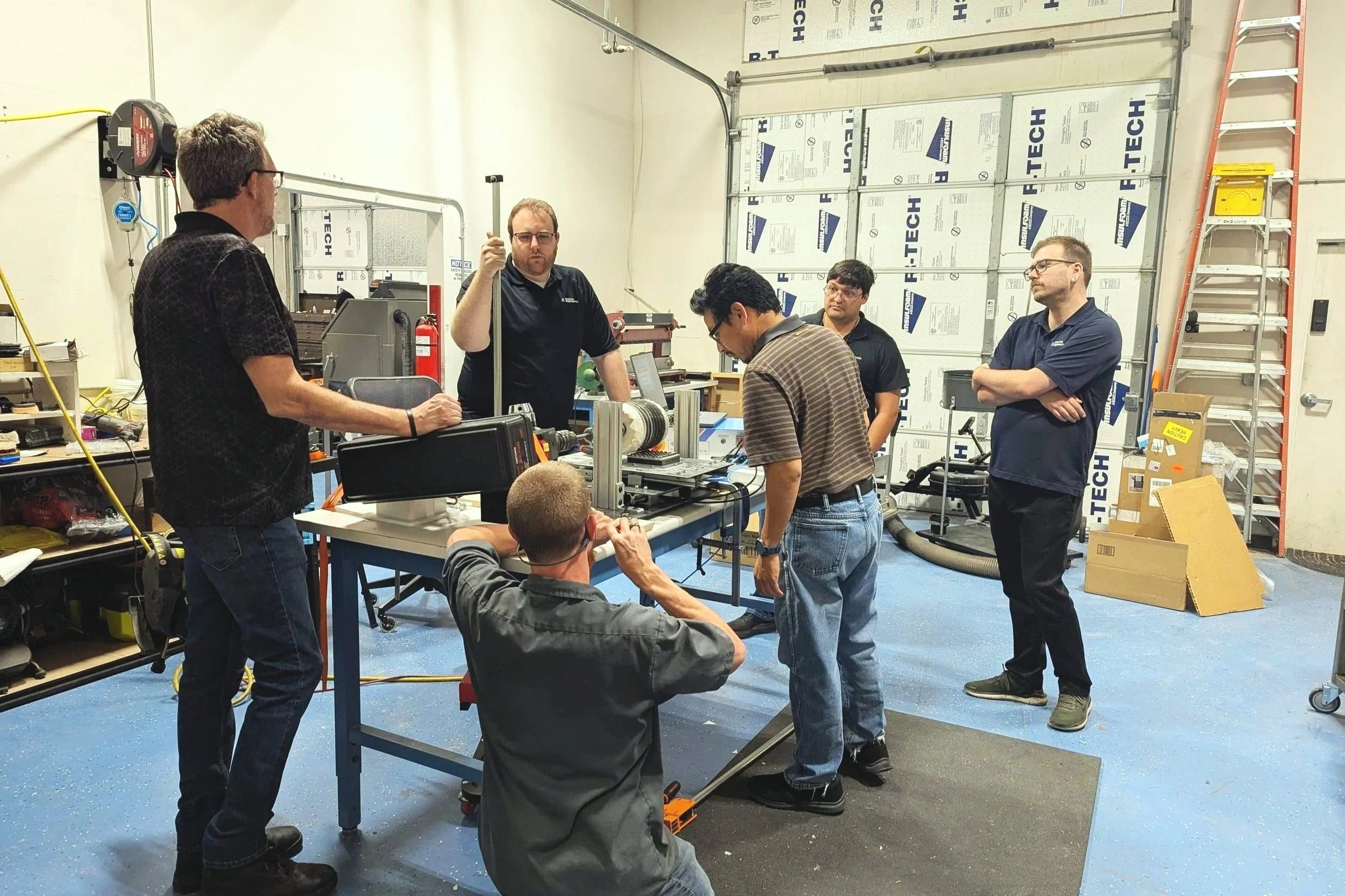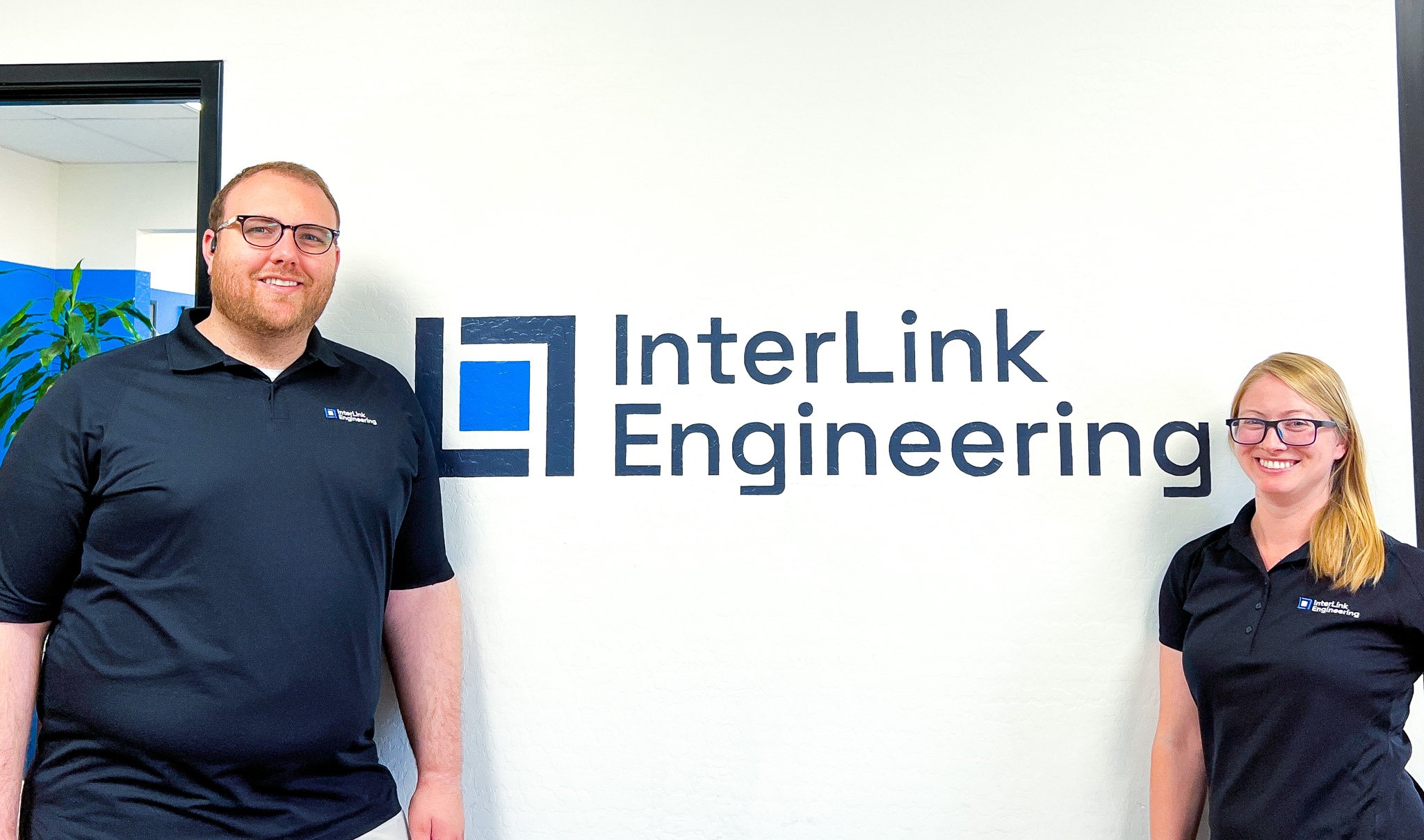Inside the Mind of an Engineer: A Conversation with Dylan Pratt
At InterLink, we get to see Dylan Pratt’s passion for engineering in action every day, and it definitely keeps things exciting around here. As our Owner and Director of Engineering, Dylan loves tackling tricky challenges and turning ideas into real solutions. In this conversation, we pulled back the curtain to find out what inspires him, how he approaches problem solving, and what keeps him motivated to lead our team.
What’s your story, how did you find your way into design engineering?
I think I knew pretty early on that I wanted to be an engineer. I can remember talking about it as far back as second grade. At the time, I didn’t really know what kind of engineer I wanted to be, I just liked the idea of building and creating things. For a while, I thought I wanted to be an electrical engineer. I even gave a school presentation about it, describing a project I thought was really cool, which, looking back, was actually completely mechanical and not electrical at all.
It wasn’t until right before I started school for electrical engineering that I realized what I really loved was the mechanical side of things. I switched my major at the last minute, and I’ve been glad I did ever since.
What areas of engineering do you find the most exciting?
I don’t really have one specific area of engineering that excites me more than the rest. We work on so many different types of projects, and usually what makes something exciting is the challenge itself. Sometimes it’s an interesting problem to solve, and other times it’s just a really elegant solution that makes the project fun.
It’s always rewarding to work on things that have a bigger impact on people’s lives, like helping burn victims, supporting people struggling with addiction, and improving production for companies like Dexcom, which makes life better for people with diabetes.
That said, not everything has to be a huge world changing project to matter. Even something small, like a gadget that just makes someone’s day easier or more enjoyable, has an impact. But there’s definitely something extra special about knowing the work you’re doing is solving a big problem and genuinely helping people.
Who is your dream customer/client?
If I could choose a dream project, I’ve always thought it would be incredible to work on something space related, like collaborating with NASA or JPL. But honestly, some of my favorite projects are ones I never would have thought about ahead of time. For example, we’re currently working on a project that will help reduce food waste, which is a huge issue since such a large percentage of harvested food never makes it to people. That wasn’t even on my radar, but getting to be part of the solution is really exciting.
If you could build or design anything (no limits) what would it be?
If I could design or build anything, it would be my dream workshop. I know that might sound like a bit of a cheat answer, but it’s true. If I won the lottery, I’d create a shop with almost unlimited capabilities so I could tackle any project I wanted.
Right now, we always have to work within the limits of reality like cost, production methods, and the easiest way to manufacture something. Sometimes there’s a better way to do it, but it’s too expensive to try on a small prototype scale. With my dream shop, I’d have all the equipment I need to explore those ideas and push designs further. We’d be able to do so much more.
When you’re not designing, what are you usually up to? Any hobbies or side interests?
As a business owner, I don’t get a ton of free time. A lot of the time, I’m still thinking about how to optimize our systems and tackle challenges even better.
When I do have time, I love to cook. Not just to eat, but for fun, trying new recipes or learning new techniques. Recently I even tried making bagels, which is way outside my usual comfort zone since I don’t bake much.
I also enjoy playing video games, although half the time I end up spending more time setting up my computer and tweaking settings than actually playing. I guess I just like optimizing things, even in my downtime.
What helps you get back in the zone when you’re feeling stuck?
If I’m really stuck, it usually means there’s some part of the project I’m avoiding or just not excited about. When that happens, I put on some music, which I normally don’t do while working, to shift my headspace. Then I do what I call a sprint. I tell myself, ‘Alright, for the next 30 minutes I’m just going to power through this task and get it done.’
I treat those moments differently from the rest of my work. Most of the time I might have a podcast on or no background noise at all, but for these tasks I create a specific setup that helps me focus. It’s almost like flipping a switch in my brain to get into that mode.
What’s a piece of advice that stuck with you and who gave it to you?
Two pieces of advice come to mind. The first is something I heard a long time ago that really stuck with me: there is no ‘Widget R Us’ store. The solutions we need don’t just exist out there waiting for us to buy them. A lot of what we do is completely custom, and we have to create it from scratch. That is a good reminder for me and for our clients that what we are building is new, and it takes time and effort to make it real.
The other piece of advice is a little funnier, but just as true: don’t half-ass something, full-ass it. I heard it in a comedy segment once, but I think about it a lot. If you are going to do something, do it right and spend the time it takes. Whenever I am tempted to cut a corner, that phrase pops back into my head.
If you had any advice for someone who wants to be a design engineer, what would you say and why?
My biggest piece of advice would be to really understand how parts are made. As a design engineer, you can model almost anything in 3D software, but that does not mean it can actually be manufactured, or at least not easily or affordably.
If you take the time to learn the basics of common manufacturing methods and their limitations, you can design something that makes sense in the real world. Knowing what can and can't be done easily or cost effectively will help you create parts, assemblies, and products that are actually ready to be built and assembled.
Even in the early concept stages, it's helpful to have some idea of what is possible. Otherwise you might end up designing something that's unrealistic or overly complicated.
Getting to sit down with Dylan is always a reminder of why we love what we do. His curiosity, problem-solving mindset, and passion for building better solutions are what shape the way InterLink works with every client and project. We hope this conversation gave you a glimpse of the drive and creativity behind the scenes and maybe even inspired you to tackle your own challenges with fresh ideas.
Got an idea you’re excited about? We’d love to hear about it. Drop us a message through our contact page and let’s see how we can bring it to life together.
Want to stay updated?
Subscribe to our emails to get the latest information!

